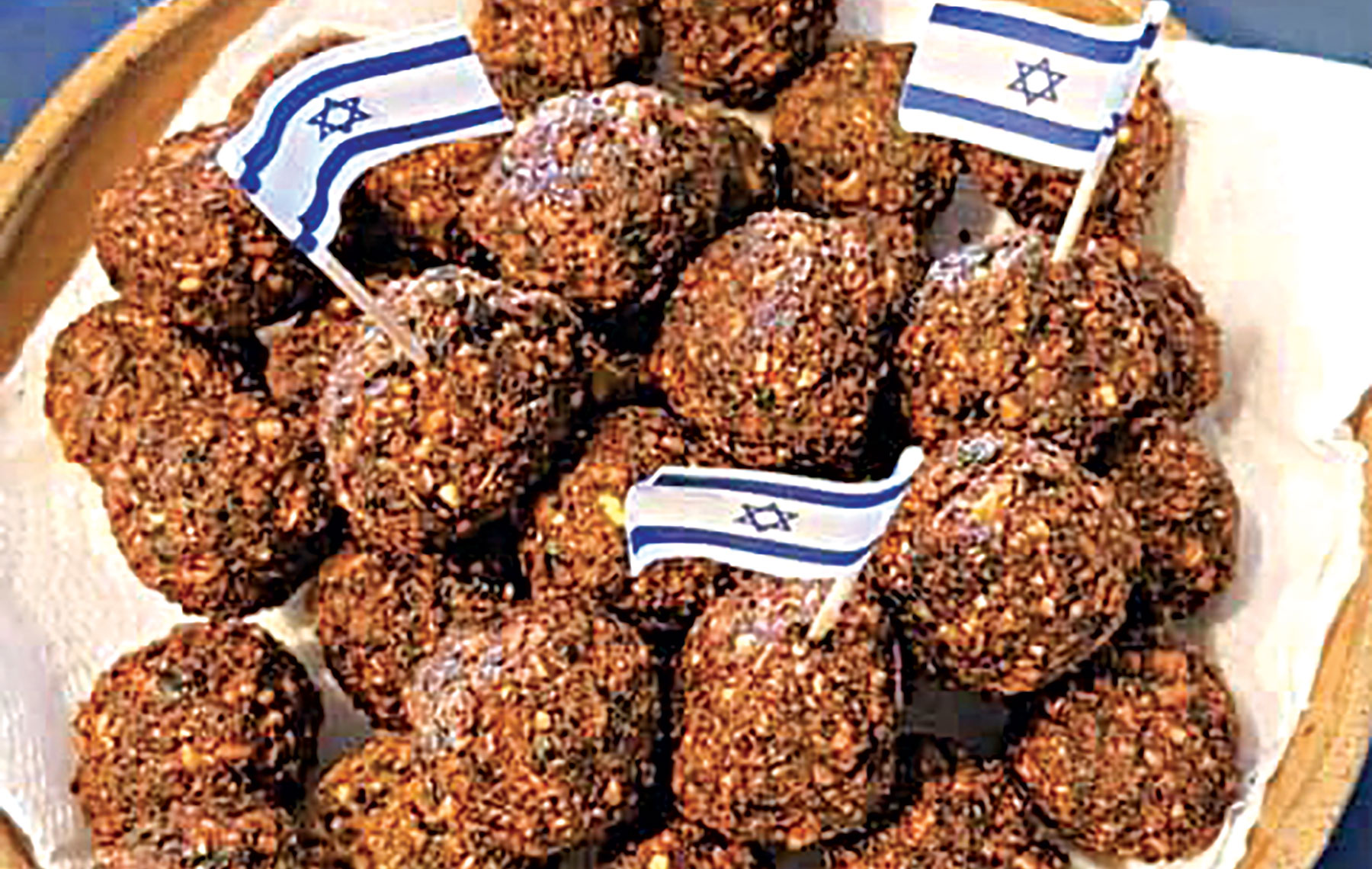
I don’t know why it surprised me. I should have expected it when I wrote a story some months back headlined “Hummus Is the Peacemaker.” I was swiftly barraged with accusations of culturally appropriating an Arab food. One tweet even rebuked me by saying, “Go back to Poland and stop stealing people’s cuisine!” The fact that I’m not Polish didn’t matter much to the tweeter; only the sentiment behind the comment was important: Jews who came from Eastern Europe had better skedaddle on back there and stop trying to take credit for the cuisine of the “indigenous population.”
Clearly the idea that Jews are indigenous to the Middle East and that Judea is named after us triggers some folks, but that pesky detail is the least of my concerns. What about the fact that so many of Israel’s national foods are modern mashups of a plethora of dishes from ancient cultures far and wide?
Consider falafel, Israel’s most popular fast food — as culturally synonymous with the country as burgers and fries are with the United States. Just as hamburgers are not technically an American invention (origin: Hamburg, Germany), falafel, deep-fried balls of fava beans or chickpeas, can be traced to India, where frying fritters made of chana dal was a common cooking practice, thought to have been brought west by Turkish or Arab traders.
Another theory about the origins of falafel is that it was invented by Egyptians using fava beans, a vegetarian alternative to meat for Egypt’s Christian population to eat during Lent. Food historians speculate that when the dish migrated toward the Levant, the fava beans were replaced by the more common chickpea, which lends credence to the notion that falafel made of chickpeas may have roots in Jewish Yemenite cuisine.
“So many of Israel’s national foods are modern mashups of a plethora of dishes from ancient cultures far and wide.”
But what is not theory is that the modern falafel sandwich, eaten standing up and on the go with plenty of napkins on hand to catch spills, is as Israeli as “Hatikvah,” its national anthem. The messy hand-held pita stuffed with seasoned, deep-fried chickpea balls, tomato and cucumber salad, hummus, pickled vegetables and usually accompanied by some version of fried eggplant and potato, tahini and hot sauce, has all the elements of today’s multicultural Israeli society and the very essence and spirit of a diverse Jewish Diaspora. With additions as varied as Iraqi fried eggplant slivers and amba (a pickled mango condiment), German sauerkraut, pickled cucumbers, beets and turnips or the Yeminite schug (a garlic, pepper chili sauce), falafel is eaten by everyone in Israel — rich, poor, Arab, Sephardic or Ashkenazic Jew, Ethiopian, vegetarian or carnivore, resident or tourist. When folks are hungry for a cheap, quick, filling and delicious meal in Israel, they often choose falafel.
My reply to the tweeter about my hummus story was this: “Hummus is my food and your food, and a lot of other people’s food. Food is for everyone.” But what I really wanted to say is this: Politics doesn’t belong in the kitchen. Discussions about food are always an opportunity to bond over a shared experience. What we eat not only tells a story about who we are and where we’ve been but it is, by definition, a reminder of our commonalities. Food is a primal need that illuminates our identity, but it doesn’t define us.
Just as it’s a universally regarded cultural taboo while dining with clients to discuss business before the meal commences, fighting over the origin of a food is a zero-sum game. People have been traveling and migrating since the beginning of time, and so has food. Although you can borrow a recipe, you can never truly own it — not even if you are the one who invented it. Great food is meant to be shared, not possessed. And if you can’t find it in your heart to do so willingly, food has a way of finding its rightful place.
YAMIT’S FALAFEL
1 pound dried chickpeas (uncooked, rinsed well and soaked overnight in cold water)
1 medium yellow or red onion (about 1 cup), finely chopped or grated
5 garlic cloves, squeezed through a garlic press
2 teaspoons salt
2 teaspoons cumin
2 teaspoons coriander
1/2 teaspoon black pepper
1/2 teaspoon cayenne pepper
2 teaspoons sweet paprika
1 tablespoon fresh ginger, finely grated
1 pinch ground cardamom
1 pinch ground nutmeg
2 tablespoons chickpea flour (chickpea flour is gluten free but all-purpose flour can be used)
2 teaspoons baking powder
1 cup fresh cilantro, finely chopped
1/2 cup fresh flat leaf parsley, finely chopped
4 cups vegetable oil (canola, grapeseed, corn) for deep frying
Soak dried chickpeas in double their volume of cold water overnight. The next day rinse and drain well.
Place chickpeas and rest of ingredients except cilantro, parsley and oil, in food processor and pulse until a coarse mixture forms. Scrape down sides of food processor between pulses to ensure the chickpeas are evenly ground. The optimal result has a bit of texture but no large pieces of chickpeas. It’s important not to create a paste but mixture shouldn’t have chunks.
When mixture is homogenous, transfer from food processor into a bowl and, using a fork, mix in chopped parsley and cilantro. Leave in refrigerator for at least 2 hours or even overnight. This is a crucial step to give the flavors time to mingle but also so that the balls hold together better.
When ready to fry, heat oil in heavy-bottomed pan until hot (350 degrees F.)
Wet hands and form balls using two tablespoons of the mixture, or about the size of a walnut. Fry one test ball.
When balls are golden brown on one side after about 2 minutes, rotate and continue to fry another 2 minutes. Taste to adjust salt and pepper. If balls are falling apart, the chickpeas might not have been ground enough. If this happens, add 1 egg to the mixture and repeat with a test ball to see if it holds together.
Fry remaining balls 6 at a time, making sure to leave enough space so they fry evenly and aren’t overcrowded. When golden brown on all sides, drain balls on paper towels and put on a wire rack to stay crisp.
Serve in a pita with hummus, salads, pickles, tomatoes, cucumber, tahini and chili sauce for drizzling on the side.
Makes 35 balls.
Yamit Behar Wood, an Israeli American food and travel writer, is the executive chef at the U.S. Embassy in Kampala, Uganda, and founder of the New York Kitchen Catering Co.























 More news and opinions than at a Shabbat dinner, right in your inbox.
More news and opinions than at a Shabbat dinner, right in your inbox.